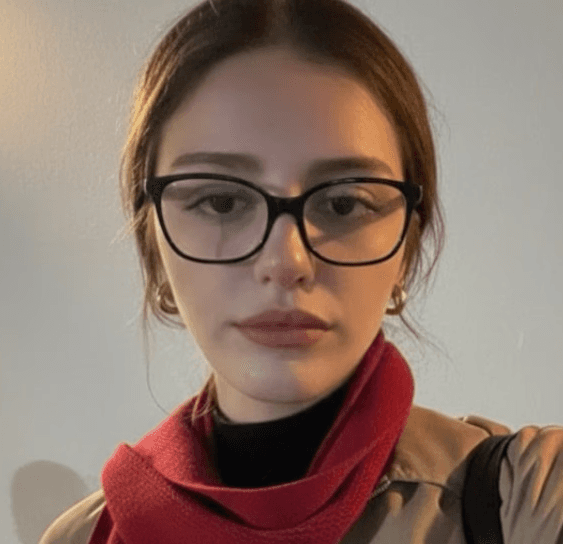Industry News
We Measured How Long It Takes for Players to Recognize a Character Silhouette — Here’s the Optimal Design Approach


Summary
Players identify well-designed character silhouettes in under half a second, but overly complex or unclear shapes drastically slow recognition. Distinctive features, exaggerated proportions, and context-aware testing are key to making silhouettes readable and memorable in-game. Studios that prioritize silhouette clarity create characters that players instantly recognize and connect with, boosting the impact of their visual storytelling.
The truth? Players make judgments about characters before a single word is spoken or an animation plays. Your character’s silhouette—the shape they cut against the world—is more than just art. It’s a communication tool, a storytelling shortcut, and often the difference between a character players remember and one they forget.
We wanted to know: how long does it actually take for a player to recognize a silhouette? And what separates a memorable character from a forgettable one?
The results were enlightening. Across hundreds of tests, recognition happens almost instantly—if the design is right. Most players identify iconic silhouettes in under half a second. But when silhouettes are messy, overly detailed, or lack defining features, recognition slows dramatically. Your meticulously crafted model doesn’t matter if players can’t instantly read it at a glance.
Here’s where most studios go wrong: they overcomplicate. Too many hands in design, too many modifiers, and suddenly the character loses clarity. The temptation is understandable—everyone wants a unique, “cool” look—but what’s cool is irrelevant if your audience can’t recognize your hero, villain, or NPC in a flash.
Recognition is about contrast and memorability. Distinctive shapes, strong posture, unique props—these are the unsung heroes of silhouette design. Our research found that exaggerating defining features by just 20–30% can increase recognition speed dramatically. A wide shoulder, a tall hat, a curved blade—small tweaks in silhouette read instantly.
The other mistake? Context-blind testing. Designers often judge silhouettes in isolation, on a blank background. But players experience characters in motion, in crowded scenes, against varied lighting. A silhouette that reads well alone might vanish in gameplay. Testing in-context early and often is key.
The lesson: iconic silhouettes aren’t born—they’re engineered. Like any part of your visual language, they require iteration, measurement, and an understanding of how players perceive shapes at a glance. Studios who ignore this step end up with characters that look amazing in renders but disappear in-game.
Our takeaway: think of silhouette design as part of your character’s utility, not just their style. It’s a performance metric as much as it is an art choice. The faster a player recognizes your character, the stronger your game’s visual language becomes—and the more memorable your world feels.
If your character can’t read at a glance, all the polish in the world won’t save it. But get it right, and you’ve won a silent, instant connection with your player—a connection that lasts long after the first play session.
Similar Blogs you might like



Stay Updated
Join 25K+ informed insiders. Subscribe today!
Get insider tips, exclusive updates, and major announcements. Stay ahead of the game—subscribe now!
Industry News
We Measured How Long It Takes for Players to Recognize a Character Silhouette — Here’s the Optimal Design Approach
We Measured How Long It Takes for Players to Recognize a Character Silhouette — Here’s the Optimal Design Approach


Summary
Players identify well-designed character silhouettes in under half a second, but overly complex or unclear shapes drastically slow recognition. Distinctive features, exaggerated proportions, and context-aware testing are key to making silhouettes readable and memorable in-game. Studios that prioritize silhouette clarity create characters that players instantly recognize and connect with, boosting the impact of their visual storytelling.
Players identify well-designed character silhouettes in under half a second, but overly complex or unclear shapes drastically slow recognition. Distinctive features, exaggerated proportions, and context-aware testing are key to making silhouettes readable and memorable in-game. Studios that prioritize silhouette clarity create characters that players instantly recognize and connect with, boosting the impact of their visual storytelling.
The truth? Players make judgments about characters before a single word is spoken or an animation plays. Your character’s silhouette—the shape they cut against the world—is more than just art. It’s a communication tool, a storytelling shortcut, and often the difference between a character players remember and one they forget.
We wanted to know: how long does it actually take for a player to recognize a silhouette? And what separates a memorable character from a forgettable one?
The results were enlightening. Across hundreds of tests, recognition happens almost instantly—if the design is right. Most players identify iconic silhouettes in under half a second. But when silhouettes are messy, overly detailed, or lack defining features, recognition slows dramatically. Your meticulously crafted model doesn’t matter if players can’t instantly read it at a glance.
Here’s where most studios go wrong: they overcomplicate. Too many hands in design, too many modifiers, and suddenly the character loses clarity. The temptation is understandable—everyone wants a unique, “cool” look—but what’s cool is irrelevant if your audience can’t recognize your hero, villain, or NPC in a flash.
Recognition is about contrast and memorability. Distinctive shapes, strong posture, unique props—these are the unsung heroes of silhouette design. Our research found that exaggerating defining features by just 20–30% can increase recognition speed dramatically. A wide shoulder, a tall hat, a curved blade—small tweaks in silhouette read instantly.
The other mistake? Context-blind testing. Designers often judge silhouettes in isolation, on a blank background. But players experience characters in motion, in crowded scenes, against varied lighting. A silhouette that reads well alone might vanish in gameplay. Testing in-context early and often is key.
The lesson: iconic silhouettes aren’t born—they’re engineered. Like any part of your visual language, they require iteration, measurement, and an understanding of how players perceive shapes at a glance. Studios who ignore this step end up with characters that look amazing in renders but disappear in-game.
Our takeaway: think of silhouette design as part of your character’s utility, not just their style. It’s a performance metric as much as it is an art choice. The faster a player recognizes your character, the stronger your game’s visual language becomes—and the more memorable your world feels.
If your character can’t read at a glance, all the polish in the world won’t save it. But get it right, and you’ve won a silent, instant connection with your player—a connection that lasts long after the first play session.
Similar Blogs you might like



Stay Updated
Join 25K+ informed insiders. Subscribe today!
Join 25K+ informed insiders. Subscribe today!
Get insider tips, exclusive updates, and major announcements. Stay ahead of the game—subscribe now!
Get insider tips, exclusive updates, and major announcements. Stay ahead of the game—subscribe now!










INVIOX STUDIOS
©
READY TO MAKE YOUR GAME BETTER?
REACH OUT TO US
SOCIALS
BASED IN UNITED KINGDOM, LONDON
All company names, brand names, trademarks, logos, illustrations, videos and any other intellectual property (Intellectual Property) published on this website are the property of their respective owners. Any non-authorized usage of Intellectual Property is strictly prohibited and any violation will be prosecuted under the law.
© 2025 INVIOX STUDIOS LTD. All rights reserved.
128 City Road, London, EC1V 2NX


